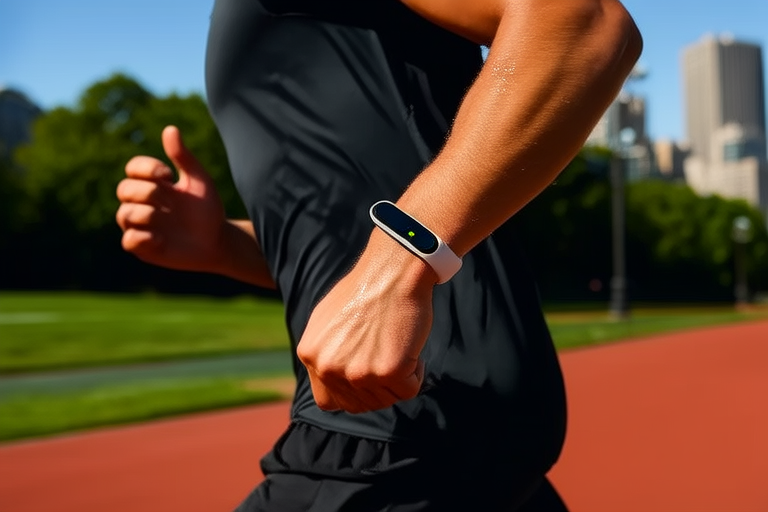The Future of Fitness: How Wearable Devices Are Revolutionizing Workout Routines
Wearable technology has become an integral part of modern fitness routines, offering users unprecedented access to real-time data and personalized insights. These devices, ranging from smartwatches to fitness bands and heart rate monitors, are transforming the way people approach their workouts, making exercise more efficient, enjoyable, and accessible. As wearables continue to evolve, they are poised to play an even greater role in shaping the future of fitness.
Introduction
The rise of wearable devices in fitness reflects a broader trend towards quantified self-tracking and personalized health management. From fitness enthusiasts to casual gym-goers, individuals are increasingly turning to these gadgets to monitor and improve their physical activity. By providing detailed metrics on everything from steps taken to calories burned, these devices empower users to take control of their health and fitness goals.
Types of Wearable Devices
Wearable fitness devices come in many forms, each designed to track specific aspects of physical activity:
- Smartwatches: These versatile devices not only tell time but also track steps, heart rate, and sleep quality. Many models also feature built-in GPS for distance tracking during outdoor activities.
- Fitness Bands: More affordable than smartwatches, fitness bands focus primarily on step counting and basic activity monitoring. Some models include additional features like heart rate monitoring and water resistance.
- Heart Rate Monitors: Worn on the wrist or chest, these devices provide precise heart rate data throughout workouts, helping users maintain optimal intensity levels.
- GPS Trackers: Ideal for runners and cyclists, GPS trackers offer accurate distance, pace, and route information, allowing users to analyze their performance over time.
- Smart Clothing: Incorporating sensors into garments, smart clothing tracks movement, muscle activation, and other biomechanical data, offering insights into form and technique.
Real-Time Data Tracking
One of the most significant advantages of wearable devices is their ability to provide real-time data tracking. Users can now receive instant feedback on their progress, enabling them to make adjustments mid-workout. For example, a runner might notice that their heart rate is higher than expected and slow down to avoid overexertion. Similarly, a cyclist could check their cadence and power output to ensure they’re maintaining an optimal pace.
This immediate feedback loop allows users to optimize their workouts, leading to improved performance and reduced risk of injury. Moreover, it encourages a more mindful approach to exercise, fostering a deeper connection between body and mind.
Personalization and Analytics
Wearable devices don’t just collect data; they also use advanced analytics to provide personalized workout recommendations. Many models feature adaptive training programs that adjust difficulty based on user performance, ensuring that workouts remain challenging yet achievable. Recovery insights help users understand when they need rest, preventing overtraining and promoting long-term sustainability.
Performance analysis tools allow users to compare their current results against past achievements, identifying areas for improvement and celebrating milestones along the way. These features turn wearables into more than just passive monitors—they become active partners in the pursuit of fitness goals.
Integration with Apps and Platforms
Many wearable devices seamlessly integrate with popular fitness apps and platforms, enhancing their functionality and utility. For instance, users can sync their activity data with Strava to track cycling routes or running trails, while MyFitnessPal helps them monitor calorie intake alongside their physical activity. This integration offers a more comprehensive view of overall health and wellness, encouraging users to adopt holistic approaches to fitness.
Additionally, some devices support third-party applications through open APIs, further expanding their capabilities. This interoperability ensures that users have access to the tools and resources they need to achieve their fitness objectives.
Future Trends
The future of wearable fitness technology looks promising, with several exciting developments on the horizon:
- Advancements in Biometric Sensors: Next-generation wearables will likely incorporate more sophisticated biometric sensors capable of measuring vital signs like blood oxygen levels and electrical activity in muscles. These enhancements will provide even more detailed insights into physiological responses during exercise.
- AIDriven Coaching: Artificial intelligence (AI) algorithms will increasingly guide users through their workouts, offering real-time advice tailored to individual needs. Machine learning models trained on vast datasets may predict optimal training regimens, ensuring peak performance while minimizing injury risks.
- Seamless Integration with Other Health Devices: As the Internet of Things (IoT) continues to grow, expect greater coordination between wearable fitness devices and other connected health products, such as smart scales, blood pressure monitors, and insulin pumps. This convergence will create a unified ecosystem for managing all aspects of health and wellness.
Challenges and Considerations
While wearable fitness technology holds great promise, there are also challenges to consider:
- Privacy Concerns: With so much personal data being collected, privacy remains a critical issue. Users must carefully review app permissions and ensure that their information is protected against unauthorized access.
- Battery Life Limitations: Despite improvements in battery technology, many wearables still require frequent charging. Longer-lasting batteries would enhance usability by reducing downtime.
- Cost of Maintenance: Owning multiple devices or upgrading regularly can become expensive. However, as competition intensifies, prices are likely to decrease, making these tools more accessible to a wider audience.
Despite these challenges, the benefits of using wearable fitness technology far outweigh the drawbacks. By embracing these innovations, individuals can take charge of their health and fitness journeys like never before.
Conclusion
In conclusion, wearable devices are revolutionizing the world of fitness, offering real-time data tracking, personalized analytics, and seamless integration with popular platforms. As technology continues to advance, we can expect even more powerful tools to emerge, further enhancing our ability to stay active and healthy. Whether you’re a seasoned athlete or just starting out, exploring the possibilities offered by wearable fitness technology can lead to better workouts and greater enjoyment of physical activity.
So why wait? Dive into the world of wearables today and discover how these cutting-edge gadgets can transform your fitness routine!


